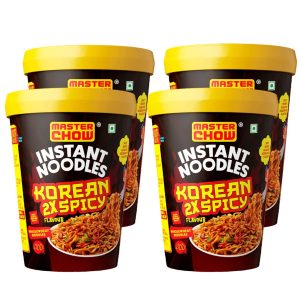 Noting the escalation and reach of Korean soft power through its appealing culture across the world and the North East, Meban Aibor Nengnong explores it’s ascent
Noting the escalation and reach of Korean soft power through its appealing culture across the world and the North East, Meban Aibor Nengnong explores it’s ascent
The Korean wave, which emerged in the 1990s, has had a significant impact on various aspects of popular culture, ranging from fashion and cuisine to technology and lifestyle. The process of globalisation has played a crucial role in spreading Korean culture and exerting its influence across the globe.
 Despite its undeniable appeal and captivating nature, there is a deeper history behind this phenomenon that remains largely unknown to the majority. Rising from a state of trepidation, driven by necessity and a longing to escape from reality, Sunday Shillong explores how the Korean appeal grew into a global phenomena, including the North East India, and particularly, Shillong.
Despite its undeniable appeal and captivating nature, there is a deeper history behind this phenomenon that remains largely unknown to the majority. Rising from a state of trepidation, driven by necessity and a longing to escape from reality, Sunday Shillong explores how the Korean appeal grew into a global phenomena, including the North East India, and particularly, Shillong.
How it all began
Korean culture did not start off in a glamorous state; rather, it was in a state of despair. Further exploration of this topic will shed light on the circumstances that led to its transformation. Without certain pivotal events, the Korean wave as we know it today may not have come into existence. So, when and how did the Korean wave begin?
The term “Hayallu,” which means Korean wave in Chinese, originated in the 1990s when South Korean television shows and pop music gained immense popularity in China. The term was coined by a Beijing newspaper when the boy-band H.O.T, under SM Entertainment, held their first international concert in Beijing, China in 2000. (The Guardian, 2022)
The release of the first Korean drama in China, titled “What is Love?” garnered over 150 million views. This success was followed by another drama called “Winter Sonata,” which became highly popular in Japan in 2002, surpassing 3 million views. (Anadolu Ajansi, 2023)
The Korean wave gradually spread to other countries like Vietnam, Taiwan, and Indonesia, where it gained significant traction and attention. However, it was the live performance by the boy band H.O.T that truly propelled Korean culture to new heights. During the live concert, the audience members proudly exhibited their support for Korea by adorning their backpacks with the Korean flag. This gesture epitomised a newfound respect and admiration for Korean culture.
The Korean wave also known as Hayallu refers to the remarkable expansion of Korean pop culture. Interestingly, it originated as a state policy aimed at utilising soft power to stimulate economic growth and recover from the Asian economic crisis of 1997. After a series of bankruptcies, along with financial crises and foreign exchange instability in East Asian countries, bearing a detrimental impact on investors’ confidence in Korea, the Koreans began looking inwards.
 Under their cultural initiatives, aspiring actors, artists, or entertainers then underwent rigorous training, while script writers for TV shows, series, movies, and songs also did the same. Music producers and songwriters were also brought in to contribute to the economic structure and promote Korean culture on a large scale.
Under their cultural initiatives, aspiring actors, artists, or entertainers then underwent rigorous training, while script writers for TV shows, series, movies, and songs also did the same. Music producers and songwriters were also brought in to contribute to the economic structure and promote Korean culture on a large scale.
This process has been consistently sustainable over time with the budget allocation was 5.4 billion Korean won (KRW) ($4.1 million) in 1994 which increased to an investment of 1.5131 trillion won ($1.217 billion) in 2023. (Anadolu Ajansi, 2023) (korea.net, 2023)
During the expansive era, the ultimate aim was to extend Korean music into China by forming idol groups that specifically targeted teenagers. These groups were meticulously designed to resonate with the younger audience, with their members predominantly in their late teens or early twenties.
Recognising the exceptional qualities of Korean music in contrast to the Chinese preferences, Korean pop music was slowly introduced to numerous Chinese radio stations. Despite the language barrier, the vibrant and rhythmic melodies compensated for any communication challenges.
North East India
 In North East India, the Korean trend can be traced back to the Revolutionary People’s Front, a banned organisation from Manipur, which took a stand against the screening of Hindi movies and channels believing that they were eroding the core values of the people. As a result, this prohibition opened up a gateway for Korean commodities to enter the state through pirated DVDs.
In North East India, the Korean trend can be traced back to the Revolutionary People’s Front, a banned organisation from Manipur, which took a stand against the screening of Hindi movies and channels believing that they were eroding the core values of the people. As a result, this prohibition opened up a gateway for Korean commodities to enter the state through pirated DVDs.
Unintentionally, the Indian government’s Look East Policy, designed to strengthen trade relations with Myanmar and neighbouring countries, inadvertently contributed to the proliferation of piracy culture. Consequently, the influence of Korean culture gradually seeped into other states in the Northeast.
The influence of the Korean wave has been felt in various parts of the North east region, including Manipur, Nagaland, and Mizoram, since the early 2000s. Notably, popular Korean dramas like ‘Sassy Girl’ were even dubbed into Mizo. In Manipur and Nagaland, local cable networks started broadcasting Korean channels such as Arirang news and KBS during that period. This cultural phenomenon created a noticeable impact in the Northeast, attracting the attention of the rest of the country. Additionally, Indian television channel Doordarshan (DD) joined in by airing Korean dramas like ‘Emperor of the Sea’ in 2006.
 The tribes of Meghalaya and the North East are a clan oriented society, which could explain why Korean culture has gained such a huge following in Northeast India. The family-friendly and emotionally-driven narratives of K-dramas and movies resonate with the people, despite the language barrier. The cultural affinity, shared social and traditional values, unique tribal traditions, languages, and religious practices all contribute to the popularity of Korean culture among the youth. Additionally, music plays a significant role, as it is deeply ingrained in the North east’s traditions and folklore, further fuelling the fandom.
The tribes of Meghalaya and the North East are a clan oriented society, which could explain why Korean culture has gained such a huge following in Northeast India. The family-friendly and emotionally-driven narratives of K-dramas and movies resonate with the people, despite the language barrier. The cultural affinity, shared social and traditional values, unique tribal traditions, languages, and religious practices all contribute to the popularity of Korean culture among the youth. Additionally, music plays a significant role, as it is deeply ingrained in the North east’s traditions and folklore, further fuelling the fandom.
“I find Korean culture attractive for several reasons. Firstly, the dynamic entertainment industry, particularly K-pop and K-dramas, captivates me with its catchy music and compelling storylines. My admiration for BTS, a prominent K-pop band, initially sparked my interest in Korean culture, leading me to explore other aspects such as Korean cuisine with its bold flavour, fashion and beauty trends, cultural heritage which includes traditional music, dance, art and architecture and technology,” notes a young BTS fan, Feryleen Nongpiur.
In recent years, the Korean wave has rapidly gained traction in Shillong, particularly during the Covid-19 pandemic, captivating a broader range of individuals. This growing fascination with Korean culture frequently begins with a sense of curiosity, akin to how one might initially jest at others for watching another popular TV giant, ‘The Game of Thrones’ but ultimately becomes engrossed after a single episode.
Such curiosity eventually evolved into a profound longing for further exploration. Notably, the Korean wave has even impacted consumer choices, as Samsung has emerged as the favoured mobile phone brand among the younger generation, and the trust that automobile companies such as Hyundai and Kia have extended is also notable.
Korean fashion, food (with the emergence of numerous Korean restaurants), and the beloved beverage ‘Soju’ has been flourishing in Shillong. It’s not uncommon to find at least one member in almost every household who is a passionate fan of K-pop, dramas, or movies, and can now even greet others in Korean. So what makes Korean culture attractive and appealing among youths or even adults?
“Korean culture, similar to any other culture, possesses its own distinctive approach to captivating individuals. Firstly, their traditional attire, Hanbok, exudes an exquisite and refined aura, reminiscent of royalty, thus rendering it exceptionally opulent and refined. Secondly, their music transcends mere auditory pleasure and resonance; it is the profound and poetic essence embedded within the lyrics that truly resonates with the audience.” says Jason (name changed on request).
The Korean wave is seen as motivational and inspirational, particularly among the youth. Regardless of the specific aspect, whether it is fashion or trends, Korean culture is always considered fashionable and trendy. Another Korean enthusiast, Doll, expressed her admiration for Korean culture, citing Blackpink and Korean drama as the main reasons. She particularly appreciates “Blackpink’s fashion sense and their dedication to their craft.”
This wave has indeed captivated the youth in Shillong, which is more westernised than modernised, making Korean popular culture highly influential.
The advent of technology has also greatly facilitated the availability of Korean products, making it much easier to access them (drama series, food items, and other consumer products) now than in the early 2000s to mid 2010s. The interconnectedness of the world, brought about by the technological revolution, has seamlessly integrated the Korean wave into the realm of capitalism.
When one thinks about it, technology and social media play a crucial role in the expansion of Korean culture in the North East, particularly in Shillong. An instagram user @kookie , an avid Korean culture follower pointed out that, “The exposure of Korean culture has been present for sometime, but its rise has not been as significant as it is today due to various factors, including technology, millennials and Gen-Z. With the advancement of the internet and smartphones, Gen-Z now has easier access and exposure to Korean culture through the internet at a much younger age compared to millennials, who had to purchase CDs to enjoy Korean entertainment. Although the Korean wave was already present during the millennial era, it lacked the platforms to flourish due to the absence of social media at that time.”
Despite the enchantment of Korean culture, the people of Meghalaya and North East as a whole still hold onto their own cultural and traditional identities, which are of utmost importance. While the Korean wave is a trend, it should not replace or overshadow their own heritage.
Pynhun observes, “The appealing aspect of Korean culture is their pride in their language. They not only cherish and preserve it but also strive to enrich it. This is in contrast to our culture, where Western languages are becoming dominant and necessary for communication in various settings. This is what sets Korean culture apart and makes it appealing – their genuine commitment to preserving their language. By observing them, we can acquire knowledge on how to protect our own culture and heritage, recognising that their culture serves a purpose beyond entertainment, allowing us to derive ethical values from it.”
K-culture is not just a passing fad; it has become a lifestyle that was significant in pulling South Korea out of an economic crisis. The Korean example showcases how collaborative efforts between private institutions, individuals, and state governments can contribute to the overall development, leading to its current status as the 4th largest economy in Asia and 12th in the world (Wikipedia)
The increased demand for Korean cultural products has led to a corresponding increase in their production supply. Over the decades, the Korean wave has taken the world by storm, not only in terms of dramas, music, but also in fashion, cuisine, and language impacting the lives of the youth in a manner never seen before.



